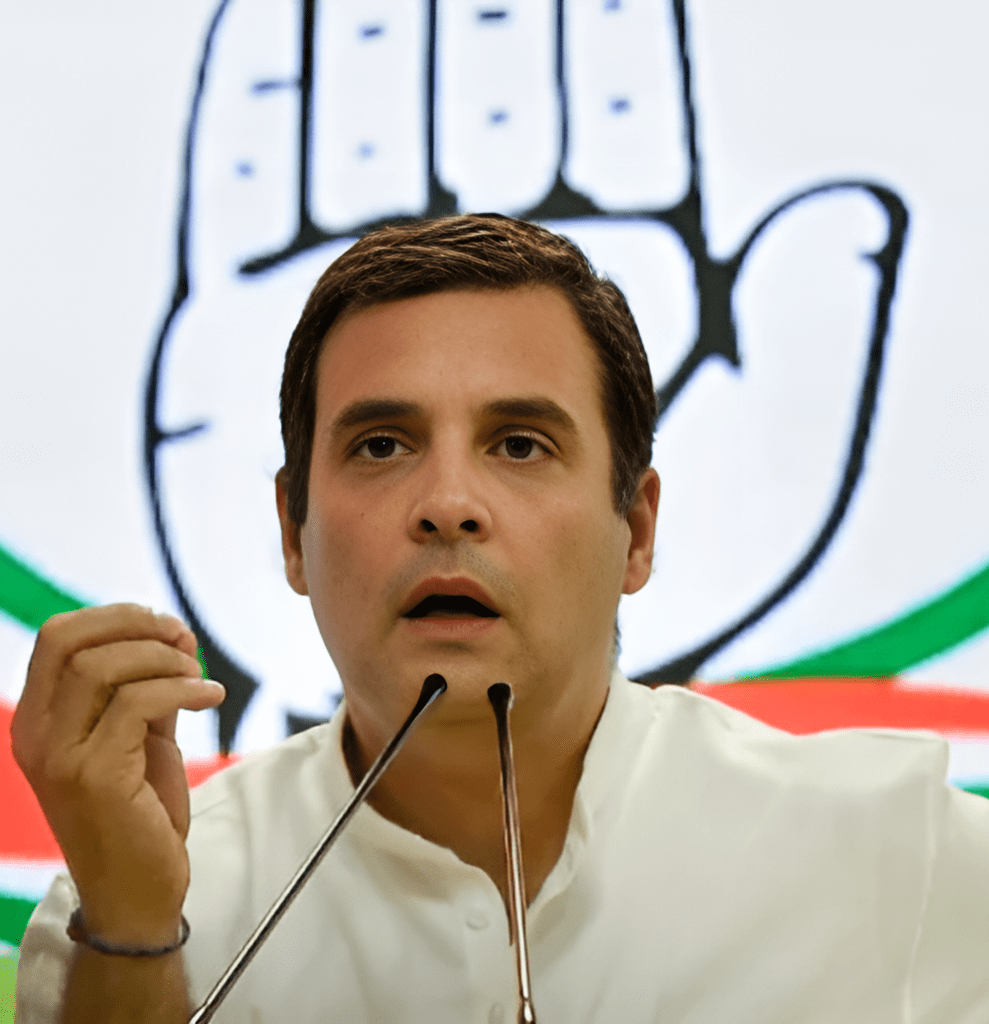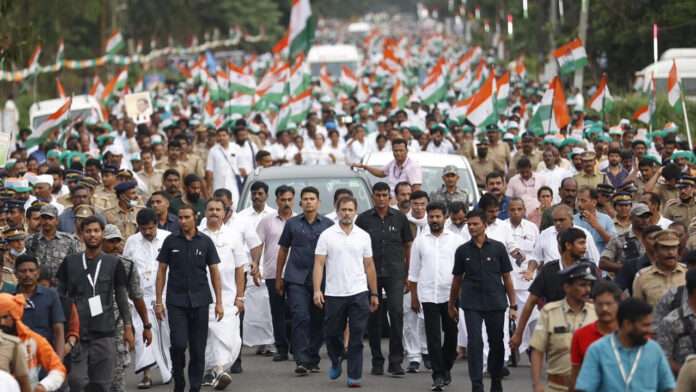The arrival of Narendra Modi in Indian politics as the fourteenth prime minister of India in 2014 started a new era in Indian politics because in the rule of the Bharatiya Janata Party (BJP) many revolutionary steps were taken under the leadership of Modi. The influence of Modi’s ideology on Indian politics designed several political, economic, and social initiatives to alter the conventional foundations of the Indian mainstream state structure. The ideological manifestations of BJP’s rule under Modi have placed the entire Indian state system under the extremist ideological features of Hindutva, a strong Hindu nationalist thought. The shadows of Hindutva ideology on India’s domestic politics have dramatically changed the internal state structure of India, which is purely based on the ideas of Hindu nationalism. The BJP’s version of Hindu nationalism has been dramatically updated by prime minister Modi who is known as a leader with fanatical ideological thoughts. Thus, the domestic Indian political system has been reformed under Modi’s version of Hindutva, a fanatical orientation of Hinduism nationalism. The overwhelming influence of Hindu nationalism defined by BJP rule under Modi is primarily Modi’s attempt for restructuring the Indian political system on strictly ideological grounds without calculating the implications of such reforms on domestic politics. The worst impacts of such a religious narrative on politics have created a countrywide wave of resistance in which people from different ethnic and religious groups have started realizing their marginalization under different pretexts. Analogous to various other religious and ethnic minorities, the leaders of various other Hindu political parties have started raising their voices against Modi’s belligerent approach to managing domestic politics under heavily loaded religious slogans. The countrywide promotion of such slogans has jeopardized the status of the non-Hindu population in India, and started taking violent measures against the people who raised their voices against Modi’s version of Hindutva. Apart from the marginalized status of minorities, the position of other political parties has also been affected by BJP’s mainstream leadership.
In the debate of resistance against Modi’s version of Hindu nationalism, the role of the Indian National Congress (INC) cannot be overlooked because the mainstream leadership of INC decided to take decisive actions against BJP’s hawkish leadership. The recent case of public demonstrations, started in Sept 2022 is an appropriate example that could validate the standing of INC in Indian internal affairs. The massive social demonstration Bharat Jodo Yatra (Unite India March) is an excellent example to validate how the other political parties are affected by the BJP’s contemporary rule. The ‘Unite India March’ is primarily designed to stand against the politics of the BJP, which has inaugurated a new era of divisive politics in India. The public march is launched by the senior leadership of Congress with the objective of uniting India beyond the BJP’s politics of creating divisions in the nation on ethnic and religious lines. Intending to unite India, this public demonstration has planned to cover 12 states (from Kanyakumari to Jammu and Kashmir) in 150 days, comprising a distance of approximately 3500 km. The countrywide public appreciation of the INC’s initiative has become a voice of the Indian public against the social, economic, and political agenda of the BJP, which has resulted in politics of hate and division. Apart from spreading a socio-religious intolerant culture across the country, the problems of unemployment and inflation have become a vibrant trend in India. The formal website of the ‘Unite India March’ encourages the Indian people to join the historical demonstration and contribute to the more significant cause of saving the social and religious diversity of India.

The leaders of INC have requested that people from different life segments, such as writers and intellectuals, political and social activities, and other eminent personalities, freely participate in the ‘Unite India March’. The Yatra (march) is open to all, and provides free access to every Indian national suffering from increasing levels of economic disparities, societal inequalities, and ideological fanaticism at the domestic level. The slogan of the march has made clear to the Indian people that Modi’s India has multiplied their suffering people under the broader rubric of welfare and development. The slogan “mile kadam, jude vatan” (walk together, unite the country) has a specific anthem and a logo to communicate the objective of the ‘Unite India March’ to the general public. The other slogan Mehengai Se Nata Todo, Mil Kar Bharat Jodo (break ties with inflation, unite India), Berozgari Ka Jaal Todo, Bharat Jodo (break the web of unemployment, unite India) and Samvidhan Bachao (save the Constitution) also conveyed the INC’s vision of ‘Unite India March’ to the Indian public. The INC’s leaders have revealed Modi’s slogan of Har Ghar Tiranga (hoisting of national flag at every home), which is BJP’s political move for securing widespread public support. Senior Congress leader, Rahul Gandhi translated Modi’s social campaign in actual words and stated that it is not enough to just salute the flag, it is important to defend the ideas and values behind the flag. This message showed that the Indian public has started adopting critical lens for analyzing the devastating impacts of Modi’s politics on the domestic Indian system. The overwhelming public response to the INC’s Yatra is a good indication of the spreading public awareness against the real face of Modi and its way of using ideology as a political tool instead of upholding the actual vision of Indian cultural and religious diversity.
Presently, the Indian political system is passing through a critical phase in which the general public is forced to live in an uncertain environment of fear, bigotry, and prejudice. The nationwide promotion of this public demonstration has given a chance to the Indian people to stand up against the violent patterns of Modi’s religious and social reforms. It has unmasked Modi’s agenda of social prosperity, economic development, and political stability on the one hand.
On the other hand, it is appropriate evidence to rationalize the argument that the Indian domestic political system is suffering under the BJP’s contemporary leadership, which is purely following a specific fanatical agenda for the promotion of religious reforms at the domestic level. Without calculating the impacts of their objective of using religion as a political tool, the Modi government is determined to restructure the Indian state system and to make the country Modi’s India.

Continuing such religious reforms will cause more devastating results for India as the voices against BJP’s political rhetoric, loaded with ideological features, have started gaining momentous public support. In other words, the increasing reliance of the BJP on religion as a political tool will only multiply social agitation across the country, and it will upset the foundations of the Indian state system which guarantee a secular and diverse state system at the domestic level. Therefore, it is more appropriate to say that the Indian public is now highly motivated under the Bharat Jodo Yatra (massive outreach social program) which has become a well-organized and well-established platform in Indian society. It has given awareness to the Indian public and encouraged them to stand against the contemporary politics of societal division, religious fanaticism, and political centralization.
The prevalence of INC’s societal initiative has inaugurated a new debate in world politics in which the international community has started analyzing Modi’s India on rational grounds. The international media and leaders of different nations are looking to the fate of India under Modi because the ‘Unite India March’ talks about the grievances of the Indian public generally and of the minorities specifically. The Congress leadership has emphasized the position of minorities in Modi’s India and tries to secure a nationwide response from all segments of Indian society. The time has now come when the Indian public is in a decisive position to secure their country from Modi’s version of India. It can broadly be considered as an effort of Indian society to liberate their country from Modi’s fanatical ideas which in essence are trying to make India as a Hindu-only-state or a BJP State.




